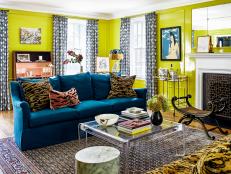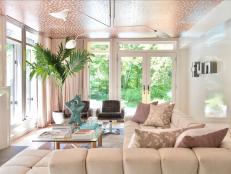1 / 20
Photo: Joe St. Pierre
Indoor Safari
“Scalamandré Zebras was designed for Gino’s Restaurant in New York City in the 1940s,” explains Barbara Karpf, president and founder of DecoratorsBest. “It was relaunched and has been one of our most popular patterns for years. This unique wallpaper creates excitement in a space and is ideal for powder rooms and guest rooms.” The deep red background fit the pattern’s original home perfectly, as one New York Times writer described it: “the zebras romp in a shower of spidery arrows over a veldt the color of a strawberry, a raw beefsteak, a Bloody Mary — a deep blush.”








